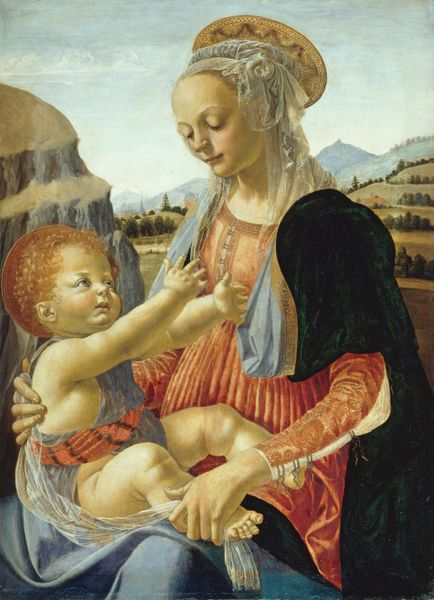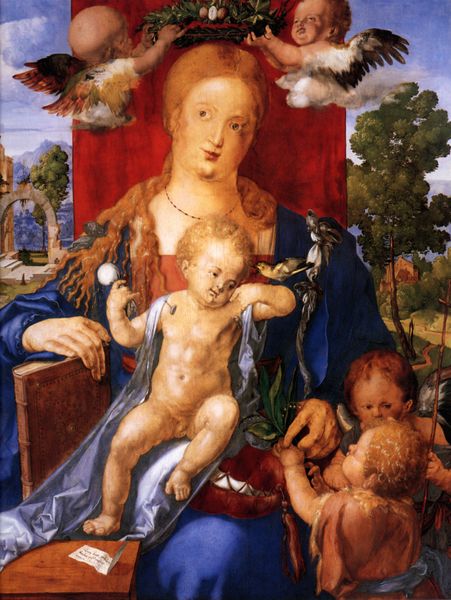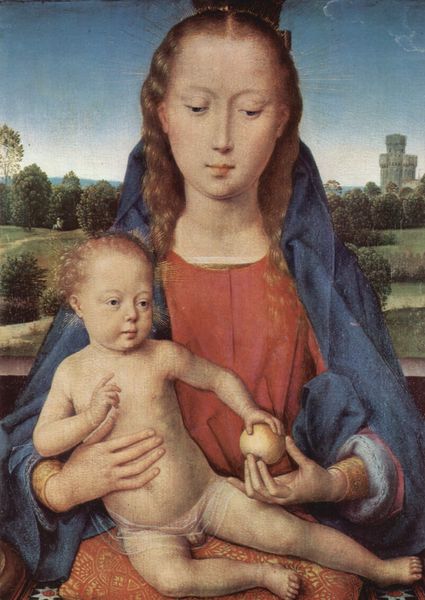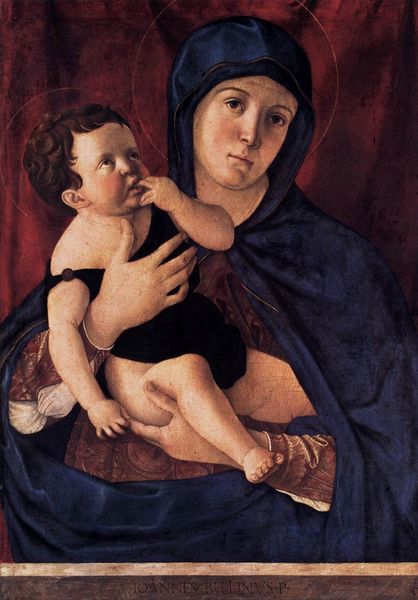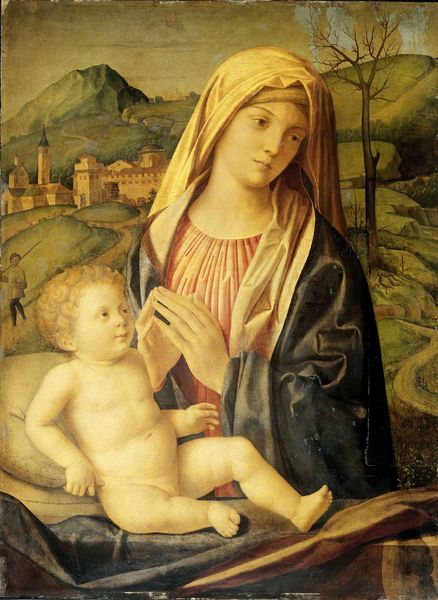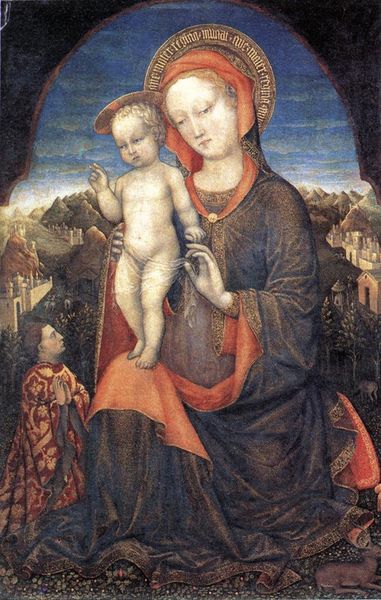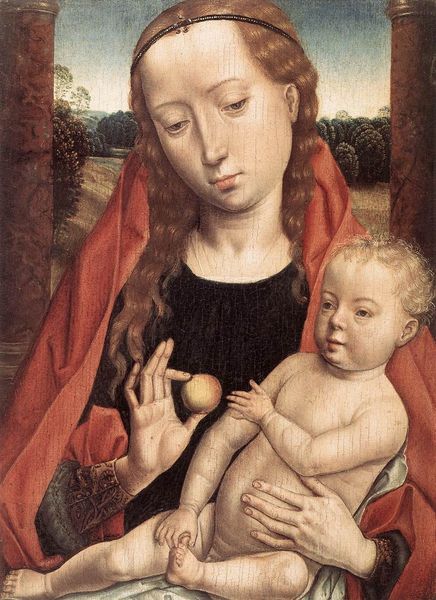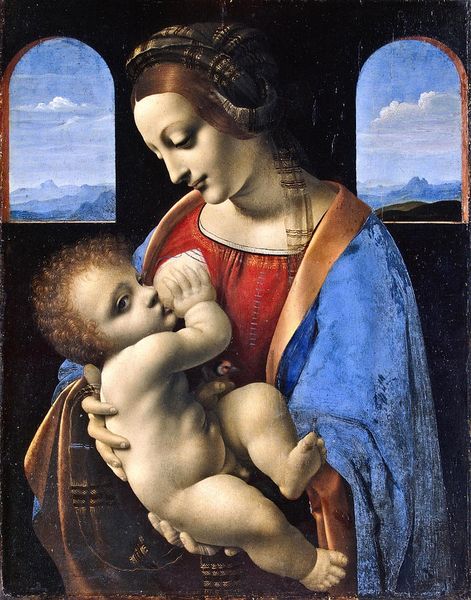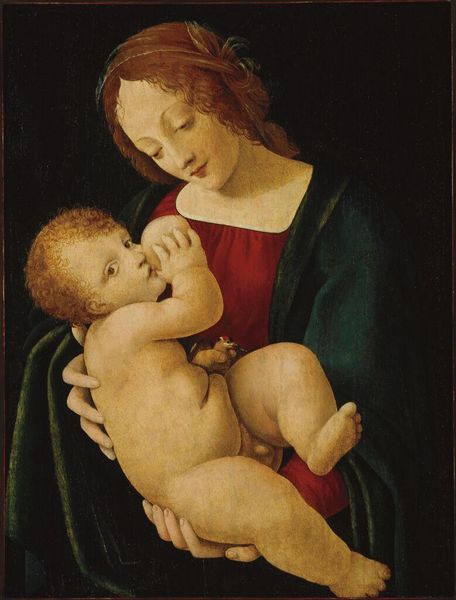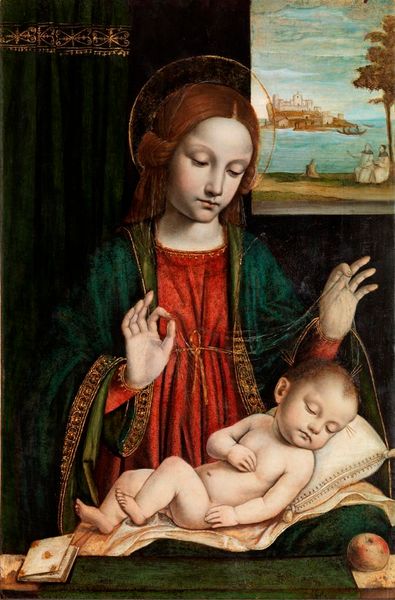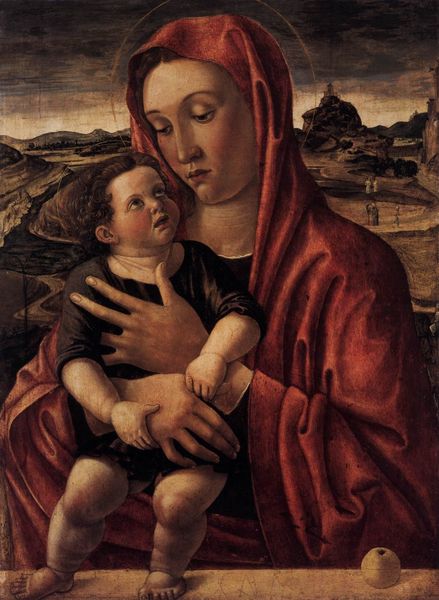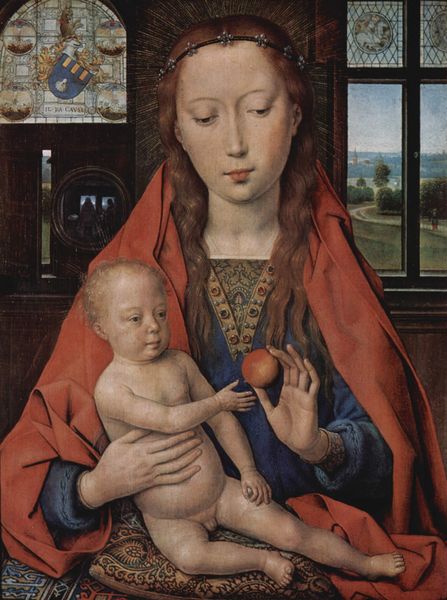
painting, oil-paint
#
portrait
#
sky
#
painting
#
oil-paint
#
figuration
#
oil painting
#
child
#
christianity
#
history-painting
#
surrealist
#
italian-renaissance
#
portrait art
#
virgin-mary
Dimensions: 68 x 85 cm
Copyright: Public domain
Curator: Vittore Carpaccio's oil-on-panel painting, "Madonna and Blessing Child," dates back to around 1510. It’s a compelling piece for our discussion today. Editor: My immediate reaction is one of a slightly unsettling calm. There's a coolness to the color palette, even with the warm tones in the Madonna's dress, and those disembodied cherubic heads floating above... it creates an uncanny feeling. Curator: Interesting you pick up on that uncanniness. I see it in the application of the paint itself. Look closely: there's a detailed rendering in the landscape backdrop contrasted with flatter, almost schematic handling of drapery folds. Where was the focus in craft, and why? Editor: For me, it’s about the symbolic charge those floating cherubs carry. They represent divine presence, eternal and watching, almost detached. And then the goldfinch, held loosely by Mary. Isn’t it symbolic of Christ’s future sacrifice, due to the association of the goldfinch with thorns? Curator: Precisely. The cultural weight is undeniable. But let's look more practically. The painting, even the artist, emerges from a specific social and economic framework. Who was commissioning these pieces, and what function did devotional imagery serve for them in their daily lives? This object isn't just divine symbolism, it’s part of a trade network. Editor: Absolutely, there's a market dynamic at play, which influences even the most sacred depictions. But it doesn't negate the image's inherent ability to evoke specific feelings—the weight of religious expectation, the protective nature of the mother… all communicated through learned iconographic cues. Curator: But the degree to which learned cultural symbolism is understood is dependent on cultural position, literacy, religious belief… Consider the pigment choices, perhaps derived from distant trade routes – it reflects the consumption of luxurious materials by the patrons who wanted to perform piety. Editor: Fair point. We cannot separate form from the conditions that allowed the artist to create such form. But acknowledging material conditions only enriches the visual story. Even now, knowing Carpaccio meticulously ground and applied oil paint enhances our appreciation for this devotional figure— it has retained emotional potency across half a millennium! Curator: It’s this constant play of materiality and symbolic intent that truly engages us as scholars, doesn't it? Editor: Absolutely. That tension keeps these old paintings perennially new, eternally worthy of our attention.
Comments
No comments
Be the first to comment and join the conversation on the ultimate creative platform.
